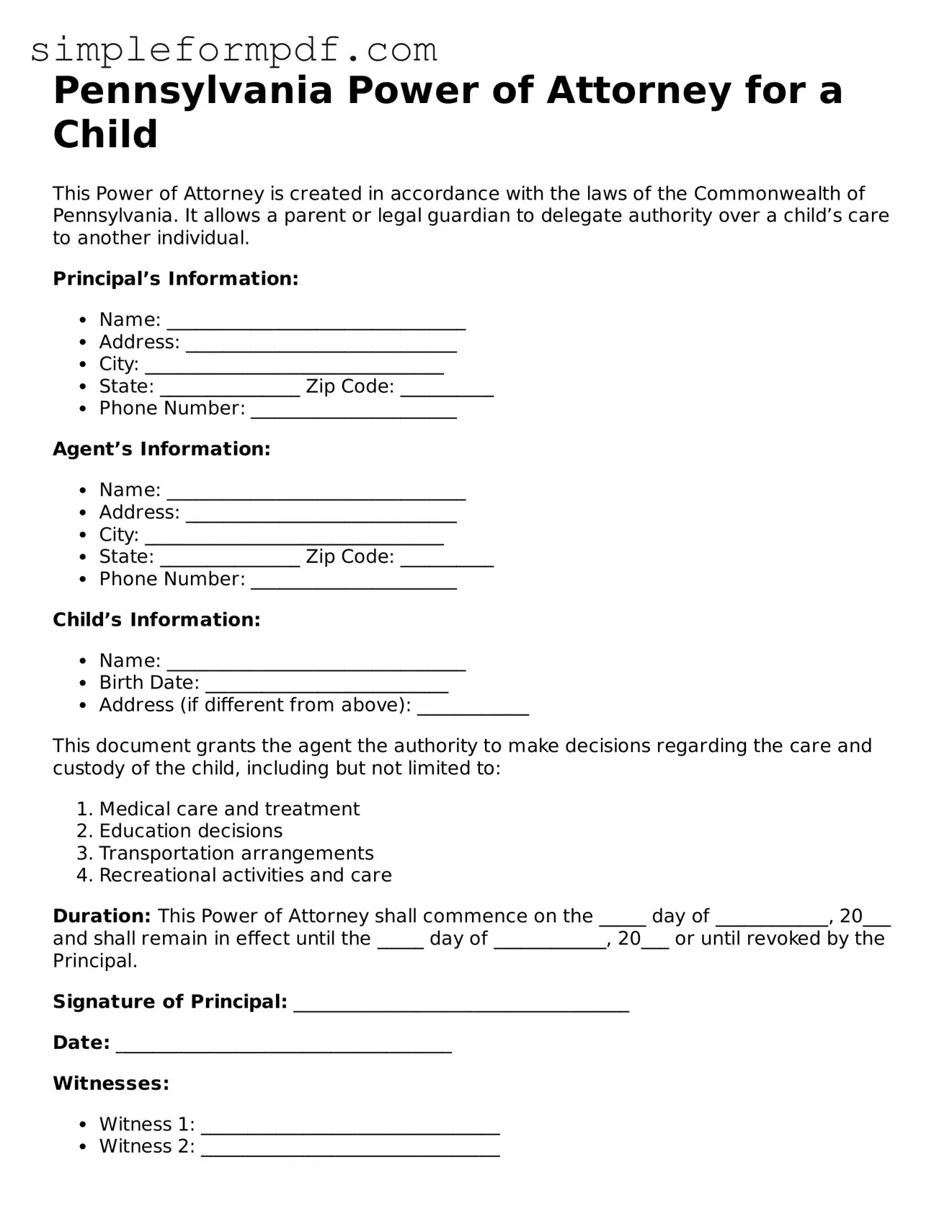Pennsylvania Power of Attorney for a Child
This Power of Attorney is created in accordance with the laws of the Commonwealth of Pennsylvania. It allows a parent or legal guardian to delegate authority over a child’s care to another individual.
Principal’s Information:
- Name: ________________________________
- Address: _____________________________
- City: ________________________________
- State: _______________ Zip Code: __________
- Phone Number: ______________________
Agent’s Information:
- Name: ________________________________
- Address: _____________________________
- City: ________________________________
- State: _______________ Zip Code: __________
- Phone Number: ______________________
Child’s Information:
- Name: ________________________________
- Birth Date: __________________________
- Address (if different from above): ____________
This document grants the agent the authority to make decisions regarding the care and custody of the child, including but not limited to:
- Medical care and treatment
- Education decisions
- Transportation arrangements
- Recreational activities and care
Duration: This Power of Attorney shall commence on the _____ day of ____________, 20___ and shall remain in effect until the _____ day of ____________, 20___ or until revoked by the Principal.
Signature of Principal: ____________________________________
Date: ____________________________________
Witnesses:
- Witness 1: ________________________________
- Witness 2: ________________________________
This Power of Attorney should be kept in a safe place, and copies may be provided to the Agent and relevant parties involved in the child's care.
